Editor’s Note: Dr. Tichavsky uses the term Holon which refers to the total environment the plant grows in, including other plants, animals, microorganisms, insects and the climate.
Also: JT potency (Jenichen / Tichavsky) is a centesimal dilution followed by 500 succussions or five hundred continuous turns with a wooden stick to the right and 500 turns to the left (if handling larger volumes). The JT potency frequently has a better reaction in plants and it is very important in preparation of live bionosodes.
Dear Dr. Tichavsky,
I am from India, the state Karnataka Raichure and I mostly cultivated pomegranate in my area. For the last ten days heavy rain falls have occurred in my area. The temperature is 30°c. I have bacterial blight. Sir, how can I get bacterial nosode from the plants. What is the process?
Thank you
Srinivas
Dr. Radko Tichavsky
Dear Srinivas,
Bacterial canker in pomegranate is caused by the bacterium Xanthomonas axonopodis pv. Punicae. It spreads mainly by rain splash, wind, contaminated pruning tools, and insects. It affects the leaves and fruits forming a kind of black layer, causing leaf and fruit drop.
Like all bacteria, X. axonopodis has its antagonists, mainly Bacillus subtilis, Pseudomonas fluorescens (it produces antimicrobial metabolites such as phenazines, siderophores and lipopeptides that have activity against Xanthomonas), Lysobacter enzymogenes degrades the cell wall of phytopathogenic bacteria. It inhibits the formation of biofilms by Xanthomonas. Also, Streptomyces spp., secrete broad spectrum antibiotics capable of controlling the bacterium X. axonopodis.
And perhaps the strongest antagonist is Bacillus amyloliquefaciens which synthesizes lipopeptides and polysaccharides that antagonize the growth of X. axonopodis. One of the most important sources of Bacillus amylolicuefasciens are the leaves of Ginkgo biloba and the roots of Acacia spp. and Eucalyptus spp.
Take a small sample of the roots of any of the trees I mention, wash some roots in a glass of water, filter the water and from the liquid phase prepare a living nosode (potentization in non-chlorinated drinking water) at potency 4 JT and apply as a spray on the leaves and you can add, as an adjuvant you can add a little Aloe vera gel blended in non-chlorinated water before potentization.
Maintain a good potassium level in your pomegranate trees. Tthis will help maintain good stomatal closure and protect the plant from Xanthomonas axonopodis pv. Punicae. Subsequently you can apply Salix babylonica 4 JT, made from the mother tincture of the bark of the tree, this remedy will strengthen the defenses of pomegranates against subsequent attacks.
Dear Doctor Tichavsky
Thank you for your generous sharing, introducing me to holohomeopathy. I am a backyard gardener in Williamsville NY, a suburb of Buffalo (14221). Being in the middle of summer temperatures range from high 50’s at night to 90’s in the daytime. My holon is dominated by a large number of large ash trees which feed in my yard which necessitates me growing in raised beds.
Other strong plants in the holon are Jerusalem Artichoke, Stinging Nettle, Comfrey, Burdock, Redbud, Elderberry. In one of my raised bed I am having serious issues, perhaps fungal. The photo below is of cucumber plants which started well but developed problems.
Red Cabbage
Branches drooping rather than growing normally (tomato, but also other plants)
Something attacks my Zuccini plants leaving large holes ( a moth?)
Thank you
Rodney Galarneau
Dr. Radko Tichavsky
Dear Rodney,
What I notice are basically two problems in the crops in the photographs. First is as you rightly point out, the presence of Fraxinus sp. trees that have a strong allelopathic interaction with practically all crops in your garden. Try to separate the soils containing Fraxinus sp. roots and also periodically remove leaves that may accumulate on the soil surface.
The second problem is the too much presence of nitrogen in relation to carbon in the soil, which produces abundant green dark tissues but with a soft epidermis susceptible to fungal attacks. Decrease the application of nitrogen in any form (compost, animal excreta or synthetic nitrogen).
Regarding the conditions, I recommend not spraying the plants foliarly and doing it exclusively by drip at ground level. You can prepare a fermented batch of Urtica sp. leaves found in your land and blend a handful of leaves in at least one liter of water for 5 and ideally 7 days.
This is in order to allow the evaporation of the nitrogenous substances, leaving potassium and phosphorus and the useful metabolites to control fungi. You can then add three tablespoons of blended aloe vera gel in a little non-chlorinated water. From this liquid prepare living nosodes dynamizing up to potency 4 JT and apply it foliarly.
To control the insects that attack your zucchini plants, you can apply Larrea tridentata 4 JT, dynamized from mother tincture of the leaves of the plant. The problems of irregular plant growth can be solved with a single application of gibberellins. You can apply a homeopathic preparation of carrot root.
Blend half a carrot root in half a liter of water add a teaspoon of sodium carbonate and add grain alcohol. The mixture of sodium carbonate with alcohol and water will facilitate the extraction of gibberellins. After five days you can filter the mother tincture and from the liquid part and prepare the potency 4 JT and apply in a single foliar application on plants with irregular growth.
For additional fungal control apply Melaleuca alternifolia essential oil at potency 4 JT, dynamized in water and sprayed foliarly.
Hello Dr Tichavsky,
After years of neglect, I noticed a year or two ago that my Japanese Maple started to get rather unruly, one branch grew longer than the rest and also bare spots appeared where a branch seem to have died, no foliage appeared on it.
This year I see a little bit of new growth where I cut the dead branches out, so I’m a little hopeful. However, I also had a passing tree specialist tell me that the tree was suffering from Verticillium wilt. He also said the tree could overcome it with good care: watering and keeping the soil under the canopy covered, which I already did because of your teachings.
My question is, is there a holohomeopathic approach that could help this tree? Since the Verticillium wilt is in the soil will all vulnerable plants in that vicinity also become affected and is there something that I can do to mitigate this problem?
Thank you for your input
Regards, Marianna Smith – Portland OR
Dr. Radko Tichavsky
Dear Mariana,
The problem of Verticillium dahliae that affects your Acer palmatum starts in the roots of the plant and as time goes by it interrupts the flow of sap (this can happen in some branches and not others) generating death of branches, leaf and fruit drop or erratic growth of different parts of the plant.
In this second phase the fungus affects the phloem and in the third phase Verticillium penetrates deeper penetrating the xylem, that is the central, woody part of the trunk.
In Diospyros kaki the Verticillium dahlieae causes leaf drop and yellowing, The fruits may have uneven ripening, discoloration and mummification due to infection or may not form at all. Depending on the time of infection, treatment becomes increasingly complicated.
The homeopathic remedies that help mitigate vascular wilt are Salix alba, the active compound salicin and salicylic acid each have antifungal activity and induce systemic resistance of trees against Verticillium. Also, Echinacea purpurea, Allium ursinum and Verbascum thapsus, the latter containing anthraquinones that inhibit the mycelial growth of the fungus.
In the case of trees with time of affection you can treat them with silver remedies at potency 12 JT. Prepare silver colloid and pass it through a three minute sonication process (in an ultrasonic bath), then potentize it to 12 JT potency and apply in a single application, in the root system of the affected trees.
Dear Dr. Tichavsky,
Is there a good remedy for potato beetles? I am in Muskegon, Michigan USA (Zipcode 49441) . We get 34 inches of rain a year. Summers are warm and humid while winters are cold. Average high temperatures in summer range from 78 to 82 degrees Fahrenheit and average lows range from 62 to 67°F. Winter brings average high temperatures of 28 to 36°F and lows of 16 to 24°F.
Thank you. I appreciate any advice you can provide.
Lori Sietsema
Dr. Radko Tichavsky
Dear Lori,
There are many remedies to eliminate the Colorado potato beetle Leptinotarsa decemlineata. Commercially, Beauveria bassiana is used, an entomopathogenic fungus. It is applied by foliar spraying at potency 4 JT in the form of a living nosode (potentized in chlorine-free water). Metarhizium anisopliae, applied in living nosode 4 JT affects adult beetles.
Bacillus thuringiensis, a bacterium you can find on the surface of dead larvae on the ground. You will see that they are covered with a whitish or beige coating. Prepare a living nosode with a pinch of agar agar and potentize it to potency 4 JT by spraying it on the potato crops. The toxins of this bacterium are effective against the larvae of the Colorado beetle, since they feed on the foliage and consume them.
The Rhizome of Acorus calamus also serves by preparing a fermentation of the rhizomes blended in water, allowed to ferment for about 5 days. The contents are filtered and applied on crops at potency 4 JT in foliar form.
Another homeopathic remedy against adult Colorado beetles is Larrea tridentata at potency 6 JT. Also, brewer’s yeast prepared in living nosode 4 JT.
I present different options for homeopathic remedies for you to choose the one that is easiest for you to obtain and apply.
Dear Dr. Tichavsky
Is there anything I can do for a newly planted plum tree (about 30 days ago) that is losing all its leaves and wilting (see photo below)? We live in Johnson City, Tennessee, U.S. 37601.
Summer High: the July high is around 86 degrees
Winter Low: the January low is 26
Rain: averages 44 inches of rain a year
Snow: averages 11 inches of snow a yea
Thank you
Tiffany
Dr. Radko Tichavsky
Dear Tiffany,
The tree is being affected by a complex of fungi most likely associated with the fungus Venturia sp. A tip when transplanting trees is, better to do it during the time when the tree has no leaves, since leaf growth is antagonistic to root development.
When purchasing a tree from a nursery make sure to buy a younger one (maximum 2 years old). What frequently happens in some nurseries is that they let trees grow in plastic bags and over time the root pierces the plastic and takes root directly into the ground.
When selling the tree the nurseryman cuts the root to detach it from the soil and this wound not only represents an easy entrance for pathogens but also affects the apicality of the trees.
Another consideration is to always ask for mycorrhized trees, that is, trees inoculated with mycorrhizal fungi for example Glomus intraradices. This arbuscular mycorrhiza colonizes the roots of the tree stimulating its defenses against infection by Venturia, for example Funneliformis mosseae which produces glomalin, a glycoprotein that strengthens the plant’s cell wall against the action of fungal enzymes, Rhizophagus irregularis that creates a physical and competitive barrier against the penetration of the pathogen, Claroideoglomus etunicatum, which inhibit the germination of spores and mycelial growth of Venturia sp., Pisolithus tinctorius, Scleroderma citrinum or Rhizopogon roseolus.
Another important factor is to ask that the varieties or rootstock be resistant to the Venturia sp. fungal complex. As for the tree in the image, apply zinc colloid mixed with copper colloid potentized at potency 6 JT applied in irrigation. Moderate irrigation in the tree.
You can also make a handful of germinated wheat, blend it in a liter of water, potentize it to potency 6 JT and apply in irrigation on the roots of the plant. The auxins in this homeopathic remedy will help the plant strengthen its roots and grow new root ramifications.
BOOKS ON HOLOHOMEOPATHY
Many readers asked about Dr. Radko Tichavsky’s books. Below is a photo of them. They are available in Spanish, Italian and Portuguese. For ordering or information: [email protected]
New Video from Dr. Radko Tichavsky!
In this video, renowned Agrohomeopath Dr. Radko Tichavsky explains Holohomeopathy, the more advanced method of agrohomeopathy: https://youtu.be/GUUoO6Lt-U8 (English subtitles)

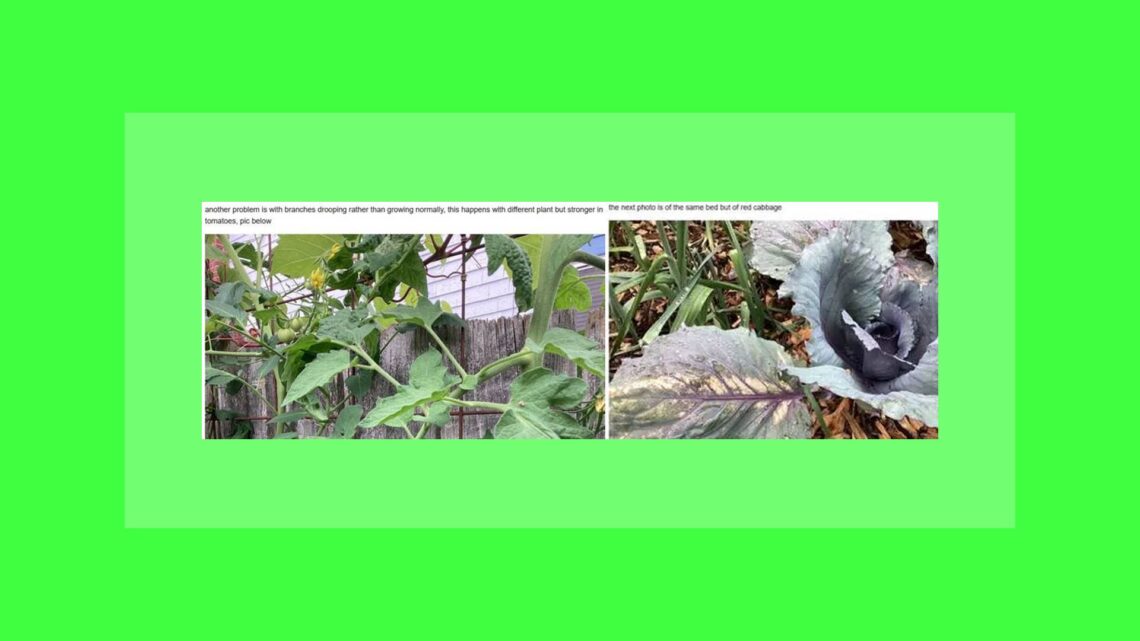
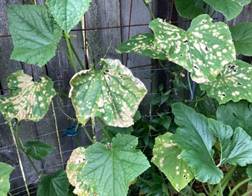
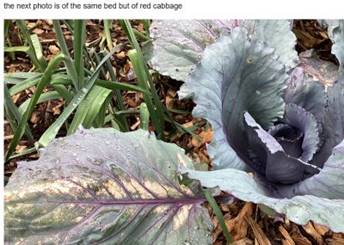
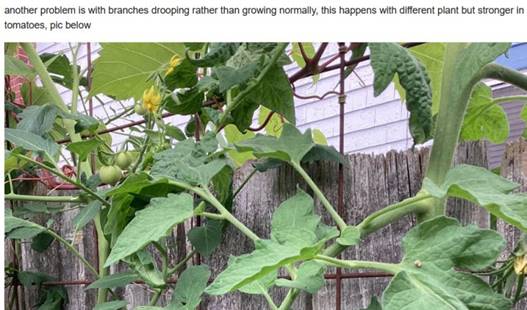

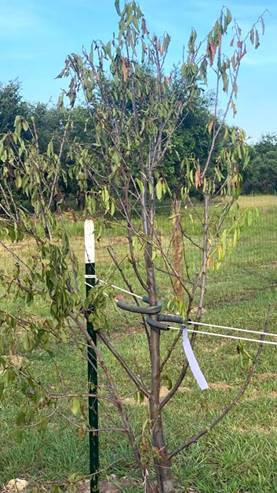
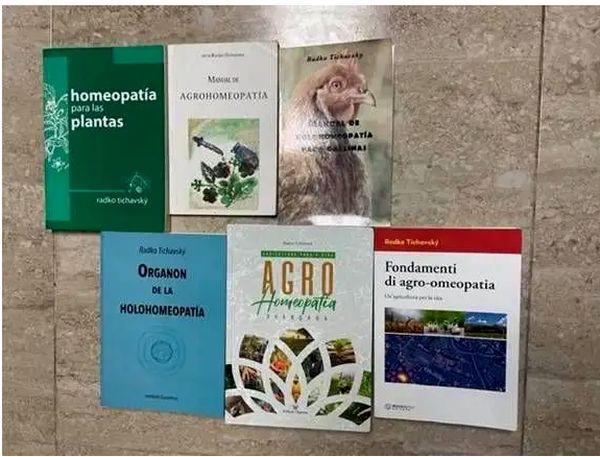


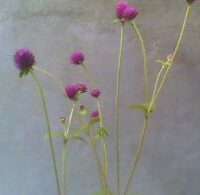

Control of whitefly in potato in Punjab, India
Interesting articles. Thank you, Plant Doc!
I have a palm tree that has Any tGanoderma zonatum(butt rot) palm tree?
I’ve been using tuja – but the mushrooms keep returning at the base. I remove them and redose thuja all around the base. The palm tree is not thriving. Frons are wilted – it is still producing new sprouts from the top, just looks frail and unhappy.
I also used a trichoderma hazianum/trichderma virdide blend for three weeks.
Any recommendations would be appreciated! I hate to have to remove it.